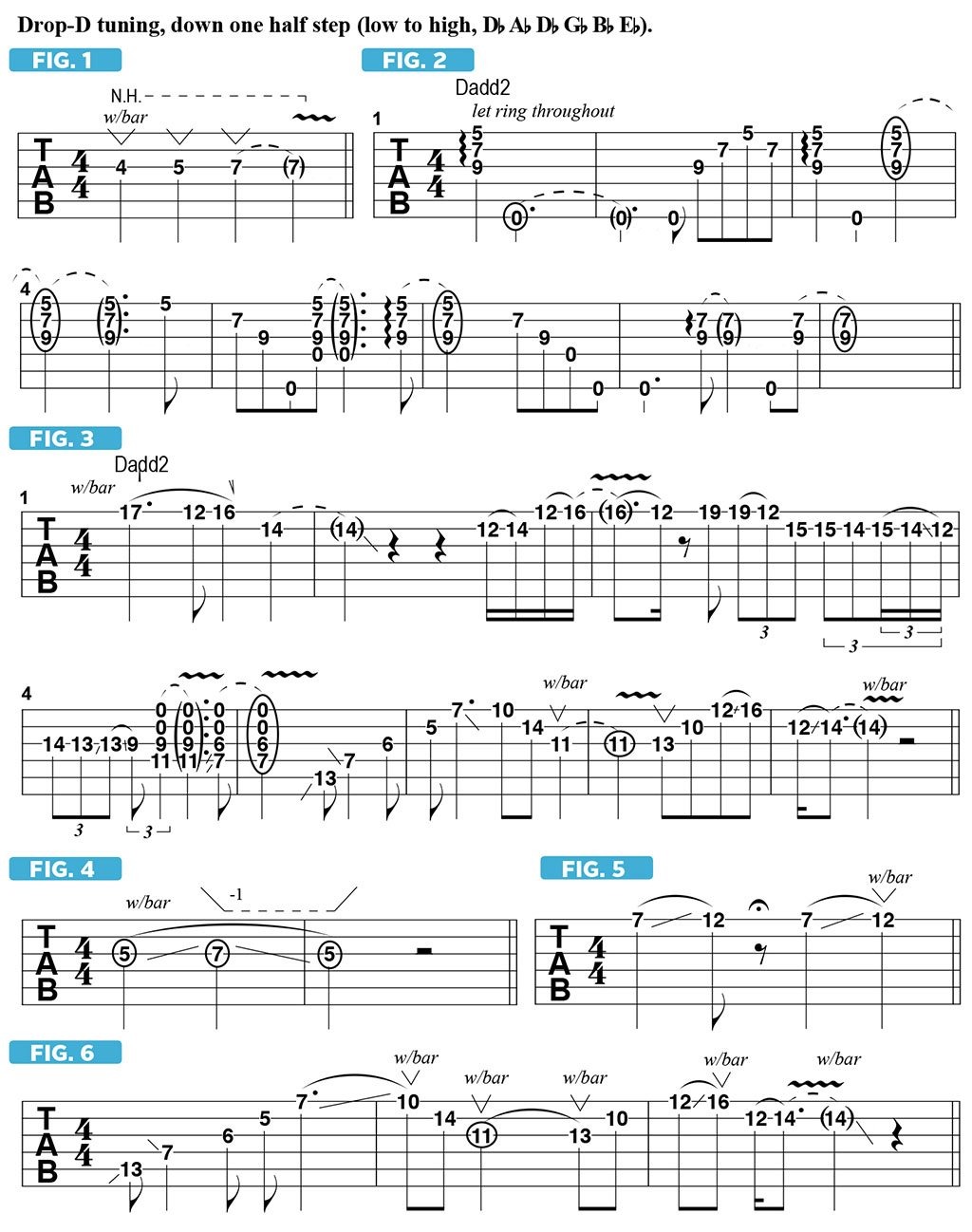In my experience, the whammy bar — known more formally as a tremolo bar, or more precisely, a vibrato bar — started to get a bad name among modern metal guitarists who were trying to play with “modern” taste. Many players think of the whammy as something from the Eighties that was only used for cliché techniques, such as “dives” or “scoops” with harmonics, as shown in FIGURE 1, and that was pretty much it. The choice came down to: Do I have a whammy bar that I will shake wildly, or will I instead play with a fixed bridge? But in truth, like any articulation technique or device available to an electric guitar player, the whammy bar can offer a really fun and expressive way to expand your sound.
The examples in this column are derived from the title track from my 2016 album, Handmade Cities. When you hear the ways in which I utilize the whammy bar to articulate the melody on this track, you’ll hopefully come to appreciate the attributes of using the bar to scoop up to pitches, as opposed to standard string bending with the fret hand.
FIGURE 2 illustrates the basic rhythm part heard on this tune. I’m fretting a Dadd2 chord on the top three strings while adding the open low D pedal tone, and I rake across the chord tones while also using an arpeggiation approach throughout, picking the notes individually and in succession and allowing them to sustain.
FIGURE 3 illustrates the single-note melodic line I play in “Handmade Cities.” This melody is based on the D Lydian mode (D E F# G# A B C#), which is the same as the A major scale (A B C# D E F# G#), starting from the fourth degree, D. In analyzing this line, the first note is scooped into from below, using the bar, which is slightly depressed as I pick the string, and then released. It would be quite difficult to sound the note in this way with standard string bending and then pull off to E and then hammer back to G#, as I do here. When landing on that G#, I articulate that note with another scoop. For the last note of the phrase, C#, I depress the bar to make the note drop off slightly, which again would be difficult with a normal fret-hand reverse bend or downward finger slide. As you play through the remainder of this example, notice the subtle use of scoops, drop offs and ascents performed with the bar, all of which are used to add musical feeling.

Another fun whammy application is to slide from one note to a higher note but depress the bar on the higher note, so that the pitch doesn’t change from note to note, as shown in FIGURE 4. When articulating slides, I prefer the sound of the bar dip at the height of the ascent (see FIGURE 5).
FIGURE 6 illustrates the last part of the melody, and here I try to use the bar a little differently as the line progresses. This is my last column for now. I hope you’ve enjoyed these lessons and found them helpful in your own musical pursuits. Best wishes!
Plini is a progressive-rock guitarist from Australia whose self-released music has scored praise from contemporary and legendary artists. His latest single, “Salt + Charcoal,” is out now. Visit plini.co for more info.
All the latest guitar news, interviews, lessons, reviews, deals and more, direct to your inbox!
